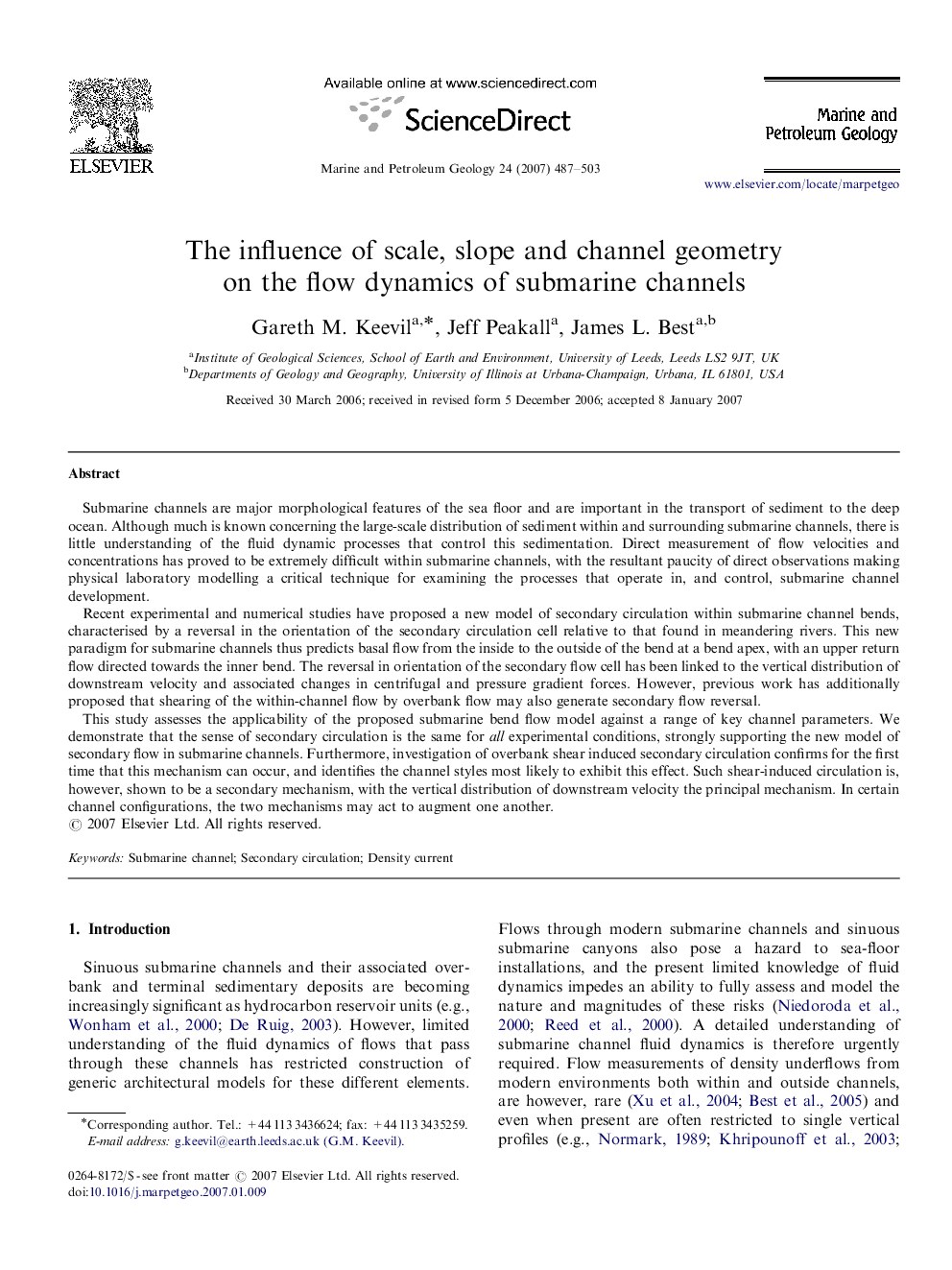| Article ID | Journal | Published Year | Pages | File Type |
|---|---|---|---|---|
| 4696485 | Marine and Petroleum Geology | 2007 | 17 Pages |
Submarine channels are major morphological features of the sea floor and are important in the transport of sediment to the deep ocean. Although much is known concerning the large-scale distribution of sediment within and surrounding submarine channels, there is little understanding of the fluid dynamic processes that control this sedimentation. Direct measurement of flow velocities and concentrations has proved to be extremely difficult within submarine channels, with the resultant paucity of direct observations making physical laboratory modelling a critical technique for examining the processes that operate in, and control, submarine channel development.Recent experimental and numerical studies have proposed a new model of secondary circulation within submarine channel bends, characterised by a reversal in the orientation of the secondary circulation cell relative to that found in meandering rivers. This new paradigm for submarine channels thus predicts basal flow from the inside to the outside of the bend at a bend apex, with an upper return flow directed towards the inner bend. The reversal in orientation of the secondary flow cell has been linked to the vertical distribution of downstream velocity and associated changes in centrifugal and pressure gradient forces. However, previous work has additionally proposed that shearing of the within-channel flow by overbank flow may also generate secondary flow reversal.This study assesses the applicability of the proposed submarine bend flow model against a range of key channel parameters. We demonstrate that the sense of secondary circulation is the same for all experimental conditions, strongly supporting the new model of secondary flow in submarine channels. Furthermore, investigation of overbank shear induced secondary circulation confirms for the first time that this mechanism can occur, and identifies the channel styles most likely to exhibit this effect. Such shear-induced circulation is, however, shown to be a secondary mechanism, with the vertical distribution of downstream velocity the principal mechanism. In certain channel configurations, the two mechanisms may act to augment one another.
